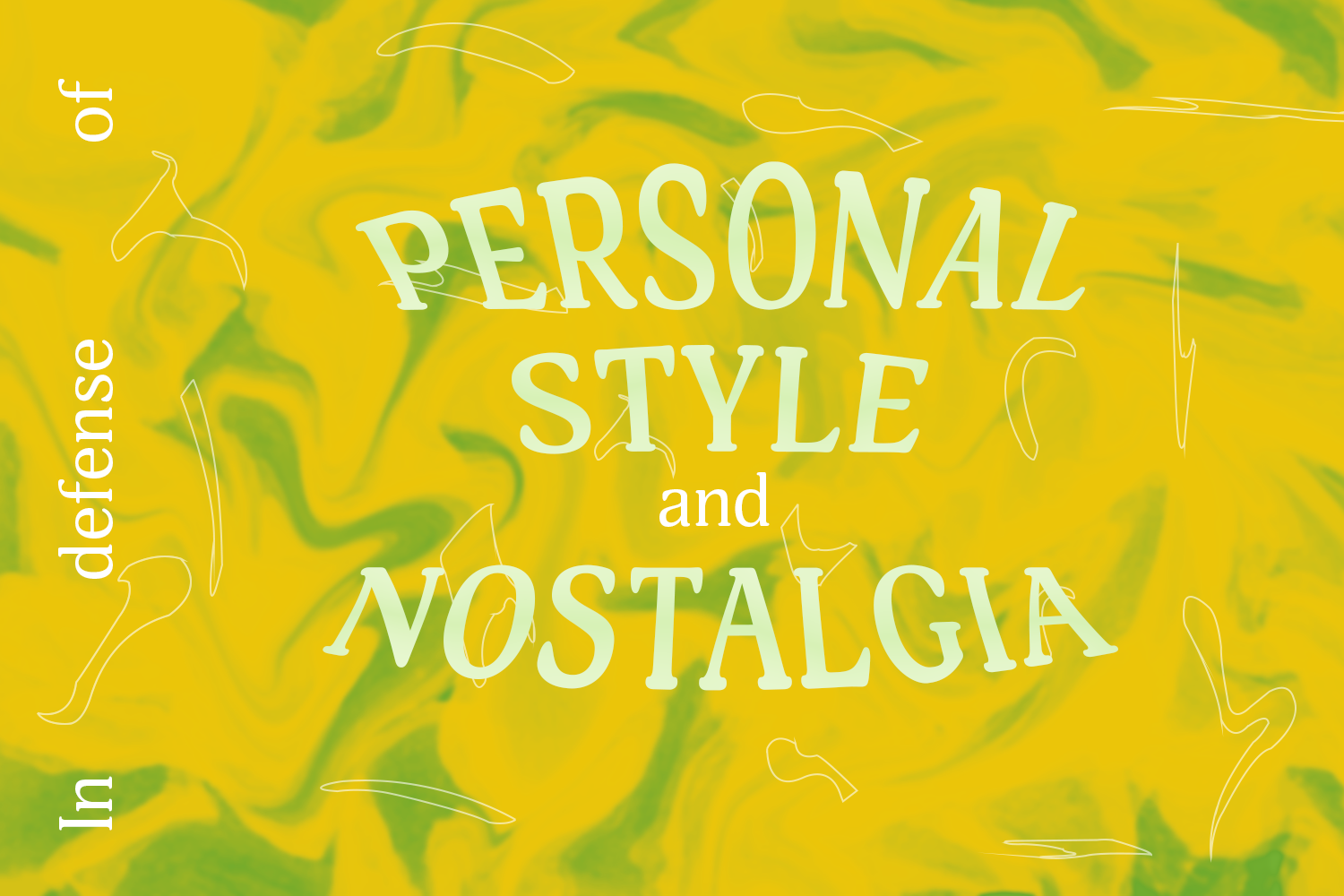If I say our generation’s style is rooted in being performatively vintage, I’m the bad guy. Millennials had their skinny jeans-ankle boots-wizard fandom scarves combo. Gen X had their flannel-based glamour grunge moment. Baby Boomers had their “dad” jeans, the little ruffle of half tucked-in tops, and flared skirts catching wind. It’s all timeless, I fear. What will a time traveler from the future dropped in Gen Z’s midst call memorable? The glaringly obvious fast fashion phenomenon that’s plaguing the 2020s? Whoever says they didn’t cringe upon seeing how dated Zoey Deutch’s styling in Not Okay looks is lying through their teeth. I can’t blame anyone for perceiving our generation as one that lacks originality. I’m not a hypocrite. (Un)fortunately, I have enough awareness to defend our meaningful contributions to fashion as a collective.
Aesthetics do not exist in a vacuum. To assume otherwise would be ignoring the fact that everything that is in style once was. They have existed before us and will continue to exist after, with slight modifications reflective of their space in time and the political and economic state of the world (don’t worry, Jaden, I care). From indie sleaze to old money to, most notably, Y2K.
We have seen a resurgence of trends on a scale that wasn’t possible without Tiktok. Even as trend cycles increasingly get shorter, with everything existing at once in the exact moment, the core of its existence has the capacity to decide all the ways it becomes historically significant. In our case, what is the point of clothing if not to find a sense of belonging tied intimately to being your whole self? New aesthetics were only created because teens were compelled to thrift, upcycle, and express themselves.
Where “we” differ is our obsession with nostalgia. We’re nothing without the past. You think your Bluetooth headphones-leg warmer-twee look is revolutionary in any way? Don’t be delusional; my great-aunt wore it first. Our elders don’t find offense in our tendencies to recycle and adopt past styles. The real crime is trying to stake any founding claim to the styles at all. We were not the pioneers, and it doesn’t really matter if you find comfort and security in fashion’s past or not. It’s not like we can be nostalgic about the ‘80s, ‘90s, and ‘00s. Most of us hadn’t even escaped the womb at that point. We can, however, draw inspiration from the past to create a visual identity for today.
When you’re just learning how to do something—learning how you want to express yourself—you want to try everything. In their beginnings: a painter will stain their canvas with every made color, a writer will dip their feet into every genre, a dancer will train in every style, and a designer will experiment with every fabric. How is curating your personal style any different?
To be minimal is to be boring, safe, and predictable. Even as a minimalist—not by choice, but by necessity—I can admit that I am at my best dressed when I have the chance to layer. My capsule closet consists of turtlenecks, sweater vests, white collar cutouts, and socks to compliment the gold buckles of my shoes. Accessories are more than accessories. Gone are the days when intricate means anything subtle; to be intricate is to have unmistakable details. Where minimalism represents order and harmony, and clean silhouettes to separate the body from clothing, maximalism is a spectacle meant to be exaggerated. It is experimental dressing and costuming alienation. Blurring everything together to make something unique is a talent that we exercise each time we put together an outfit. Our style has become unconventional, and that is the appeal. That is the point.
Words by Bri Shufford.
Graphic by Louisa Mills.

